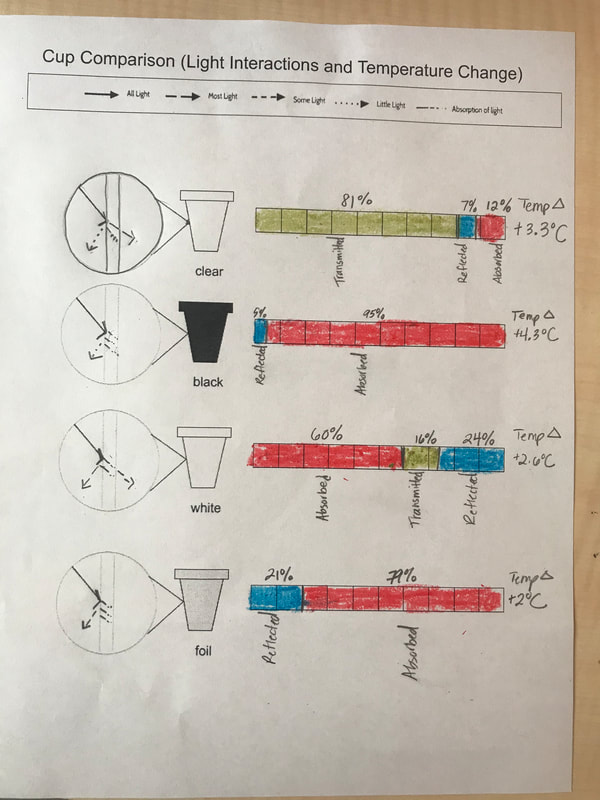With all of our data from our temperature changing/light investigations, we came to the following conclusions in our scientist circle:
1. Light affects every cup's temperature by increasing it. Light that is transmitted or absorbed makes the greatest impact, and we saw the largest temperature changes then.
2. Different cups seem to respond to light differently. Clear cups had the most light transmitted. Black cups had the most light absorbed.
3. Light plays a role in warming up cold liquids, but there's something else that warms up light, too, when light isn't present. We're thinking the hot air (or hotter air than the temperature of the liquids in the cups) plays a role. We're thinking we need to do some investigations with heat to help us better understand this!
We built out models to show what light does with each cup's surface, quantifying them in a mathematical model to show light being reflected, transmitted or absorbed on different surfaces. Stay tuned for our thoughts on heat-related investigations!
1. Light affects every cup's temperature by increasing it. Light that is transmitted or absorbed makes the greatest impact, and we saw the largest temperature changes then.
2. Different cups seem to respond to light differently. Clear cups had the most light transmitted. Black cups had the most light absorbed.
3. Light plays a role in warming up cold liquids, but there's something else that warms up light, too, when light isn't present. We're thinking the hot air (or hotter air than the temperature of the liquids in the cups) plays a role. We're thinking we need to do some investigations with heat to help us better understand this!
We built out models to show what light does with each cup's surface, quantifying them in a mathematical model to show light being reflected, transmitted or absorbed on different surfaces. Stay tuned for our thoughts on heat-related investigations!


 RSS Feed
RSS Feed